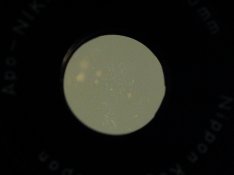Willie Jan
Member
Hi,
I bought a leica M and was wondering if the quality could be improved by using a apo lens for enlarging.
I know that the apo stands for color optimalization, but was wondering if someone did a test with black/white enlarging.
I now use a 80 componon-s or a el-nikkor 80mm for 35mm film. (I Always use a higher lens which gives a better print than a 50mm)
For 6x6 I use a 105 el-nikkor.
Is there someone outthere who has done a test between a apo and a non apo lens for black/white?
Thanks.
I bought a leica M and was wondering if the quality could be improved by using a apo lens for enlarging.
I know that the apo stands for color optimalization, but was wondering if someone did a test with black/white enlarging.
I now use a 80 componon-s or a el-nikkor 80mm for 35mm film. (I Always use a higher lens which gives a better print than a 50mm)
For 6x6 I use a 105 el-nikkor.
Is there someone outthere who has done a test between a apo and a non apo lens for black/white?
Thanks.












